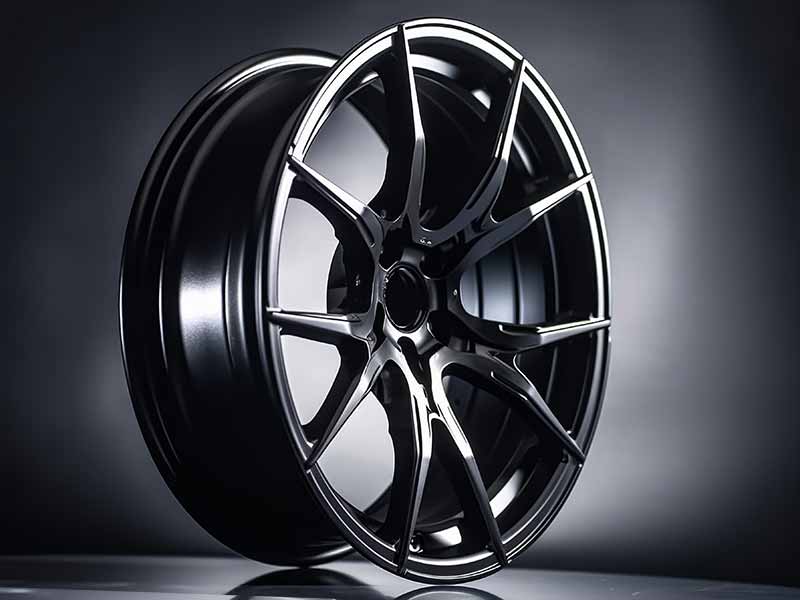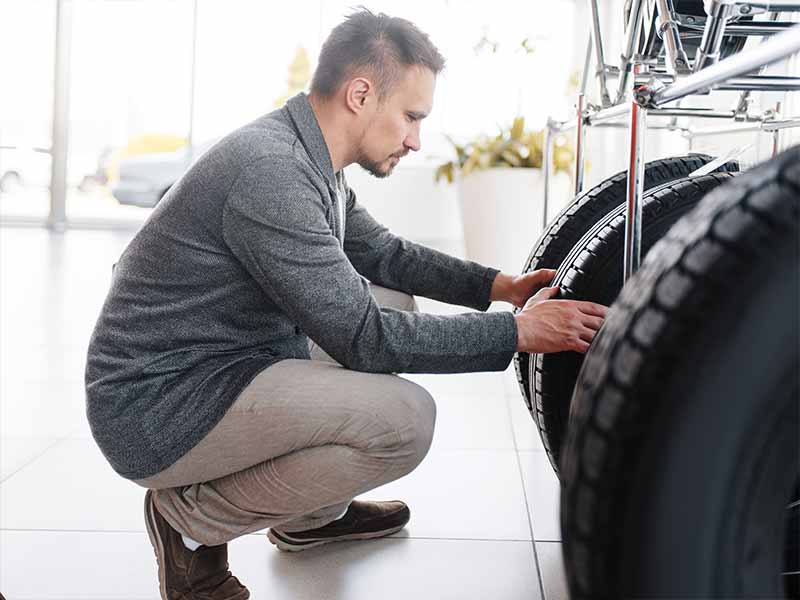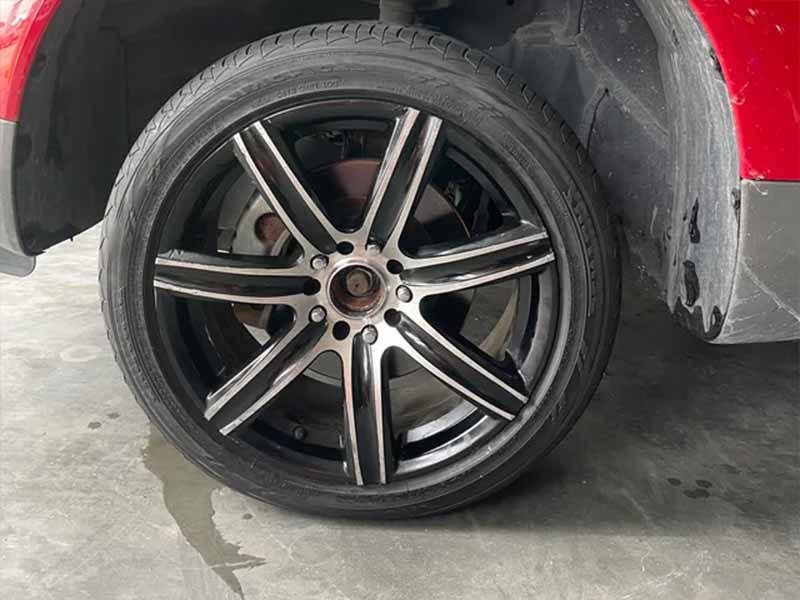Have you ever stood in a tire shop, staring at rows of rubber, wondering which one will snugly fit your rims? Or maybe you’ve found yourself with a tape measure in hand, trying to figure out if those stylish tires will actually work with your car. You’re not alone.
How Do I Know What Tires Fit My Rims?
To know what tires fit your rims, you need to match the tire’s section width, aspect ratio, and wheel diameter with your rim’s width and diameter. It’s a combination of precise measurements and understanding tire size terminology.
In this article, we’ll guide you through understanding your rims, deciphering tire size terminology, matching tires to rim width, and considering aspect ratio and wheel diameter. This comprehensive guide will empower you to select the perfect tires for your vehicle confidently.

Understanding Your Rims
Getting the right tires for your rims is like finding the perfect pair of shoes for your feet – it needs to be just right. But before we dive into the world of tires, let’s first get up close and personal with your rims. After all, knowing your rims inside out is key to making sure your tires fit perfectly.
How to Tell What Size Rims You Have
If your car already has tires, then finding out your rim size is a breeze. Here’s how:
- Check the Sidewall: Look at the sidewall of your tire. You’ll find a series of numbers and letters, something like ‘205/55R16’. The last number in this sequence, in our case, 16, is your rim diameter in inches.
- Look for Rim Markings: Sometimes, the rim itself will tell you its size. Peek inside the rim; you might find something like ’16×7′, where 16 is the diameter and 7 is the width, both in inches.
How to Measure Rim Size Without Tire
No tires on your rims? No problem! Measuring your rim manually is pretty straightforward. You’ll need a tape measure and a little patience. Here’s what to do:
- Measuring Rim Diameter:
- Place your rim standing up.
- Measure from one edge of the rim (not the tire seat) to the opposite edge. This gives you the diameter.
- Measuring Rim Width:
- Measure the distance from one inside edge of the rim (where the tire sits) to the other. This is your rim width.
- Don’t Forget the Bolt Pattern:
- The bolt pattern is crucial for fitting. Count the number of bolt holes and measure the diameter of an imaginary circle that passes through the center of each bolt hole.
Basics of Tire Sizing
Now that you’re a pro at understanding rim sizes, let’s shift gears to tire sizing. It’s not just about getting a tire that fits; it’s about ensuring harmony between your tire and rim for that smooth, safe ride. So, buckle up as we decode the numbers and terms that make up tire sizes.
Understanding Tire Size Terminology
Every tire has a story to tell through its size notation, usually something like ‘205/55R16’. Let’s break this down:
- Section Width: The first number (205 in our example) represents the section width of the tire in millimeters. It’s the width of the tire from one sidewall to the other.
- Aspect Ratio: The second number (55 in this case) is the aspect ratio. It’s a percentage that represents the height of the tire’s sidewall compared to the section width. So, a 55 aspect ratio means the sidewall height is 55% of the section width.
- Wheel Diameter: The last part, ‘R16’, tells us the wheel diameter. The ‘R’ stands for radial (type of tire construction), and 16 is the diameter in inches. This needs to match your rim diameter.
The Role of Section Width in Tire Fit
The section width is crucial in ensuring your tire fits snugly on the rim. Here’s why:
- Perfect Pairing: The tire width should correspond closely to the width of your rim. If it’s too wide or too narrow, it can affect handling, wear, and safety.
- Correlation with Rim Width: Generally, there’s a range of tire widths that can fit a particular rim width. For instance, a 7-inch wide rim can accommodate tires with section widths varying from approximately 195 mm to 225 mm.
Rim Width Compatible Tire Size Calculator
Matching Tires to Rim Width
You’ve decoded the rim and tire size mysteries. Now, it’s time to pair them up like a well-coordinated outfit. This section is all about matching the tire’s section width to your rim’s width and understanding the limits. Let’s roll!
Determining the Ideal Tire Width for Your Rim
Choosing the right tire width for your rim is essential for safety and optimal vehicle performance. Here’s how to find that sweet spot:
- Width Compatibility: The key is to ensure that the tire’s section width is compatible with the rim’s width. For instance, a rim that’s 7 inches wide can usually fit tires with a section width ranging from about 195 mm to 225 mm.
- Consult Compatibility Charts: Many tire manufacturers and online resources provide charts that show which tire sizes fit which rim widths.
Max Tire Size for Rim Width
While it’s tempting to go big, there’s a limit to how wide your tires can be for a given rim width. Here’s what you need to know:
- Safety First: Fitting a tire that’s too wide for your rim can lead to tire damage, poor handling, and even accidents.
- Maximum Width Guidelines: As a rule of thumb, avoid going more than 20 mm wider than the ideal tire width for your rim. For instance, if the ideal width is 205 mm, try not to exceed 225 mm.

Aspect Ratio and Diameter Considerations
You’re now well-versed with rim and tire sizes, and how to match them. But wait, there’s more! The aspect ratio and wheel diameter are just as crucial in the tire selection process. Let’s dive into these two key elements and understand their impact on your tire fitting adventure.
Impact of Aspect Ratio on Tire Fit
The aspect ratio of a tire plays a significant role in your vehicle’s handling and comfort. Here’s what you need to know:
- Aspect Ratio Explained: Remember, the aspect ratio is the height of the tire’s sidewall expressed as a percentage of its width. A lower aspect ratio means a shorter sidewall, leading to a firmer ride and better handling. A higher aspect ratio means a taller sidewall, offering more cushioning and a smoother ride.
- Choosing the Right Aspect Ratio:
- Stick to the manufacturer’s recommended aspect ratio range for optimal performance.
- Changing the aspect ratio can affect speedometer readings, wheel clearance, and overall vehicle handling.
Wheel Diameter and Tire Compatibility
The diameter of your wheel is the final piece of the puzzle. It’s essential to match the tire’s inner diameter to the rim’s diameter for a proper fit. Here’s what to keep in mind:
- Matching Diameters: The tire’s diameter (like the ’16’ in ‘205/55R16’) must match your rim’s diameter. A mismatch here can lead to unsafe driving conditions.
- Effects of Changing Wheel Diameter:
- Larger diameter wheels (upgrading from 16 inches to 18 inches, for example) can enhance handling and aesthetics but may reduce ride comfort.
- Smaller diameter wheels can increase comfort but might reduce handling sharpness.

Practical Tips and Best Practices
You’re nearly at the finish line in your quest for the perfect tire fit! This final section is packed with practical tips and best practices to help you confidently purchase, install, and maintain your tires. Let’s ensure your tire journey is smooth from start to finish.
Checking Compatibility Before Purchase
Before you commit to buying new tires, make sure they’re the right fit for your rims and vehicle. Here’s how to do that:
- Use Online Tools and Charts: There are numerous online resources available to help you determine the right tire size for your rims. These tools often allow you to input your vehicle model and get recommended tire sizes.
- Consult Your Vehicle’s Manual: Your vehicle’s owner’s manual is a goldmine of information on tire size specifications and recommendations.
- Ask Experts: If you’re still unsure, don’t hesitate to ask a tire professional. They can provide valuable advice based on your specific vehicle and driving needs.
Installation and Safety Checks
Getting the right tires is just the beginning. Proper installation and regular safety checks are crucial for your vehicle’s performance and your safety. Here’s what to keep in mind:
- Professional Installation Recommended: While DIY projects can be tempting, tire installation is best left to the pros. They have the right tools and expertise to ensure your tires are fitted correctly and safely.
- Key Safety Checks After Installation:
- Tire Pressure: Ensure your tires are inflated to the manufacturer’s recommended levels.
- Wheel Alignment and Balancing: Misalignment or imbalance can lead to uneven tire wear and poor handling.
- Clearance Checks: Make sure there’s enough clearance between the tires and the vehicle body, especially if you’ve changed tire sizes.
- Test Drive: Take a test drive to check for any unusual noises or vibrations.
Resources
Below are some links you may find helpful when learning about tires:
Final Thoughts
Selecting the right tires for your rims is more than just a cosmetic choice; it’s about ensuring your vehicle operates safely and efficiently.
By understanding your rims, learning about tire sizes, and matching these elements correctly, you can enhance your vehicle’s performance and your driving experience.
Remember, if you’re ever in doubt, consulting a professional is always a wise choice. They can offer tailored advice and help you navigate the wide world of tires.
Good luck and happy motoring.




